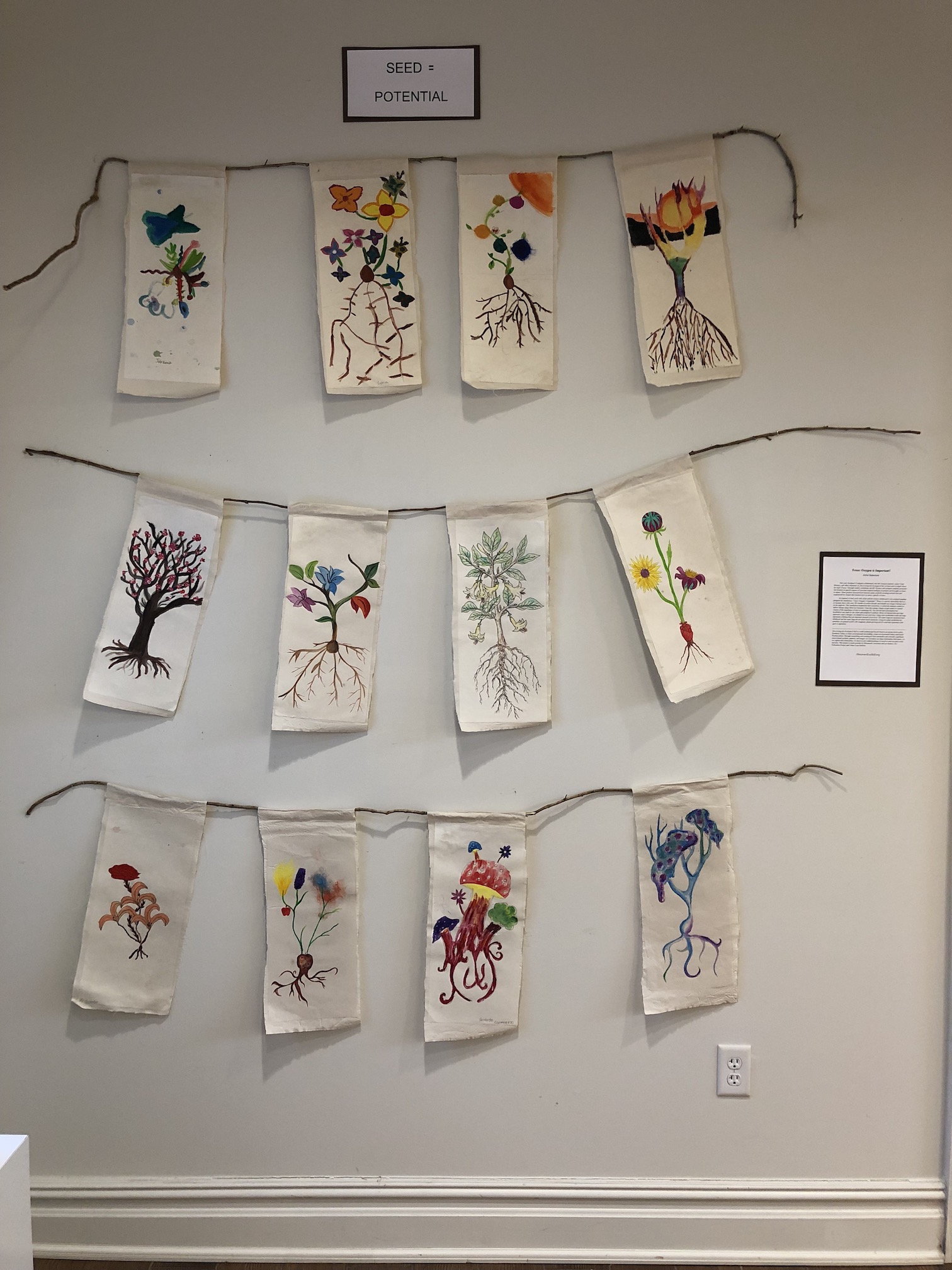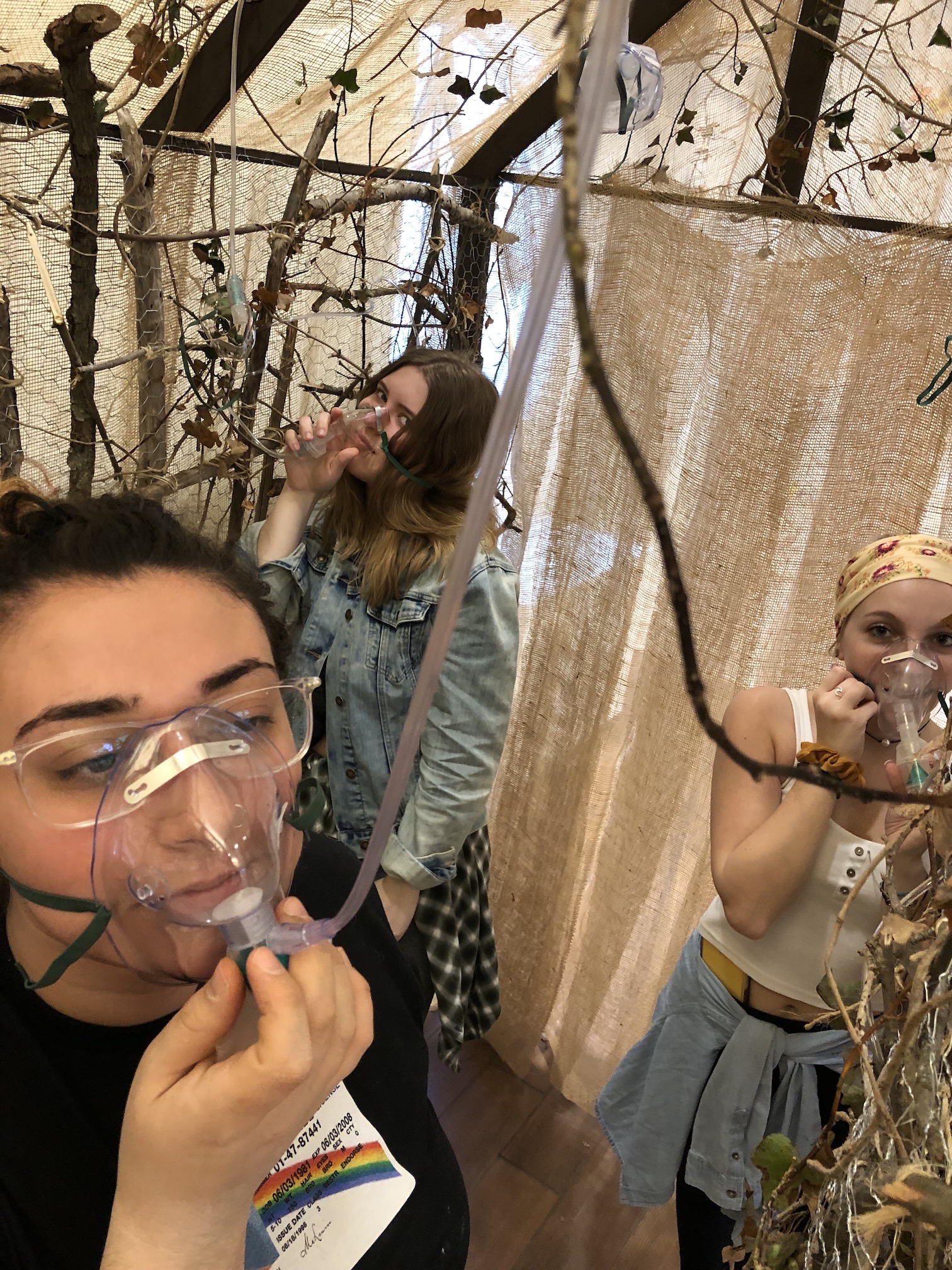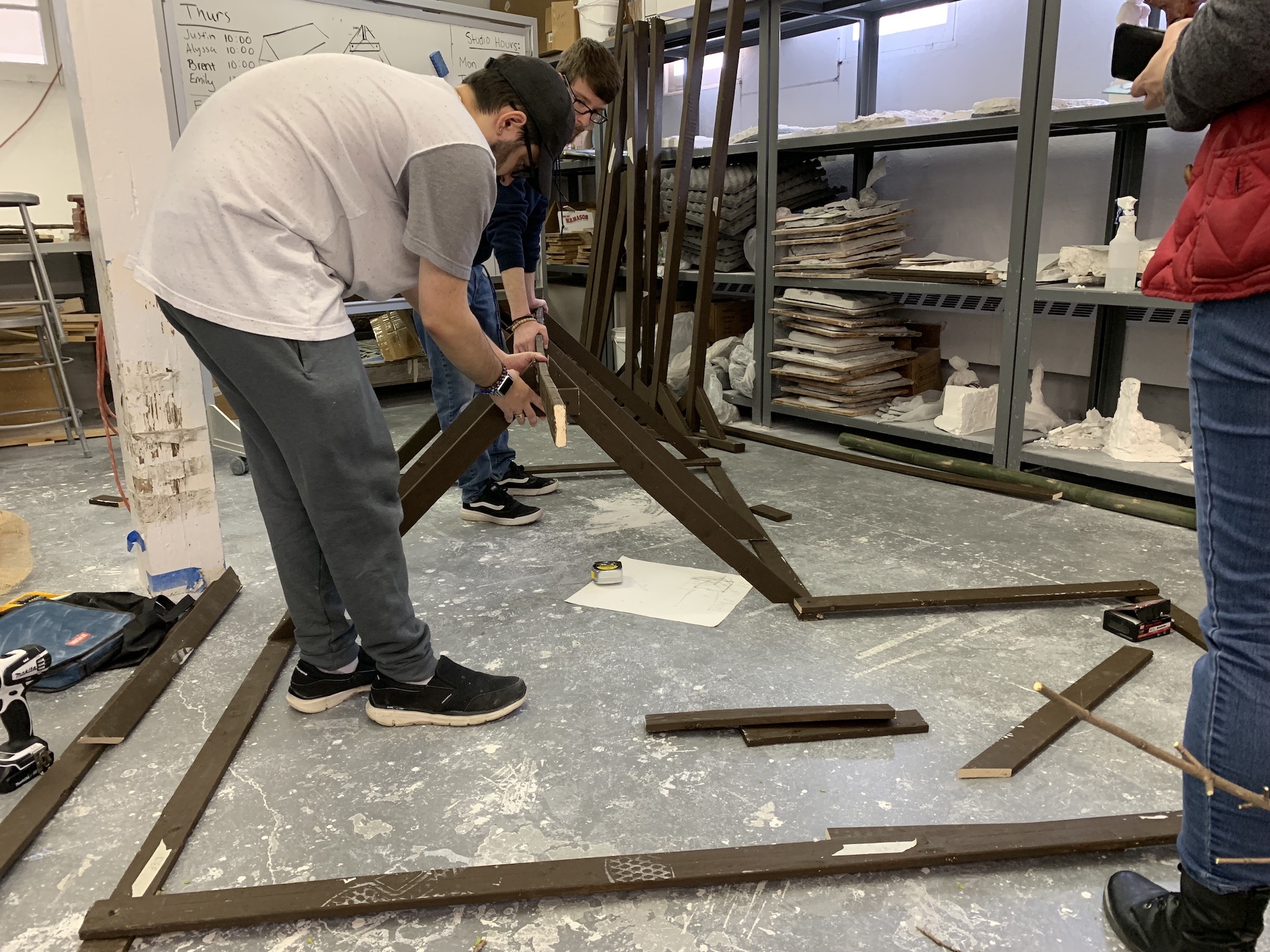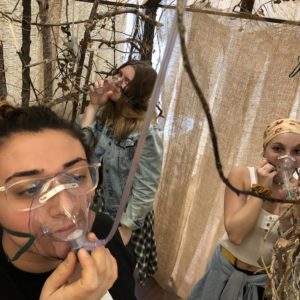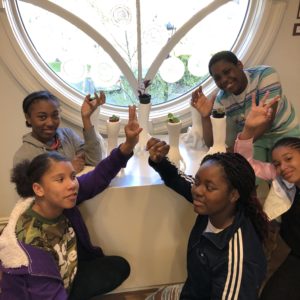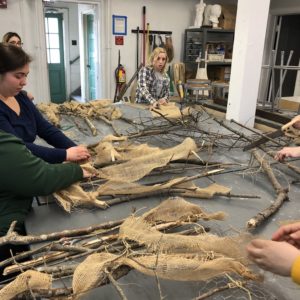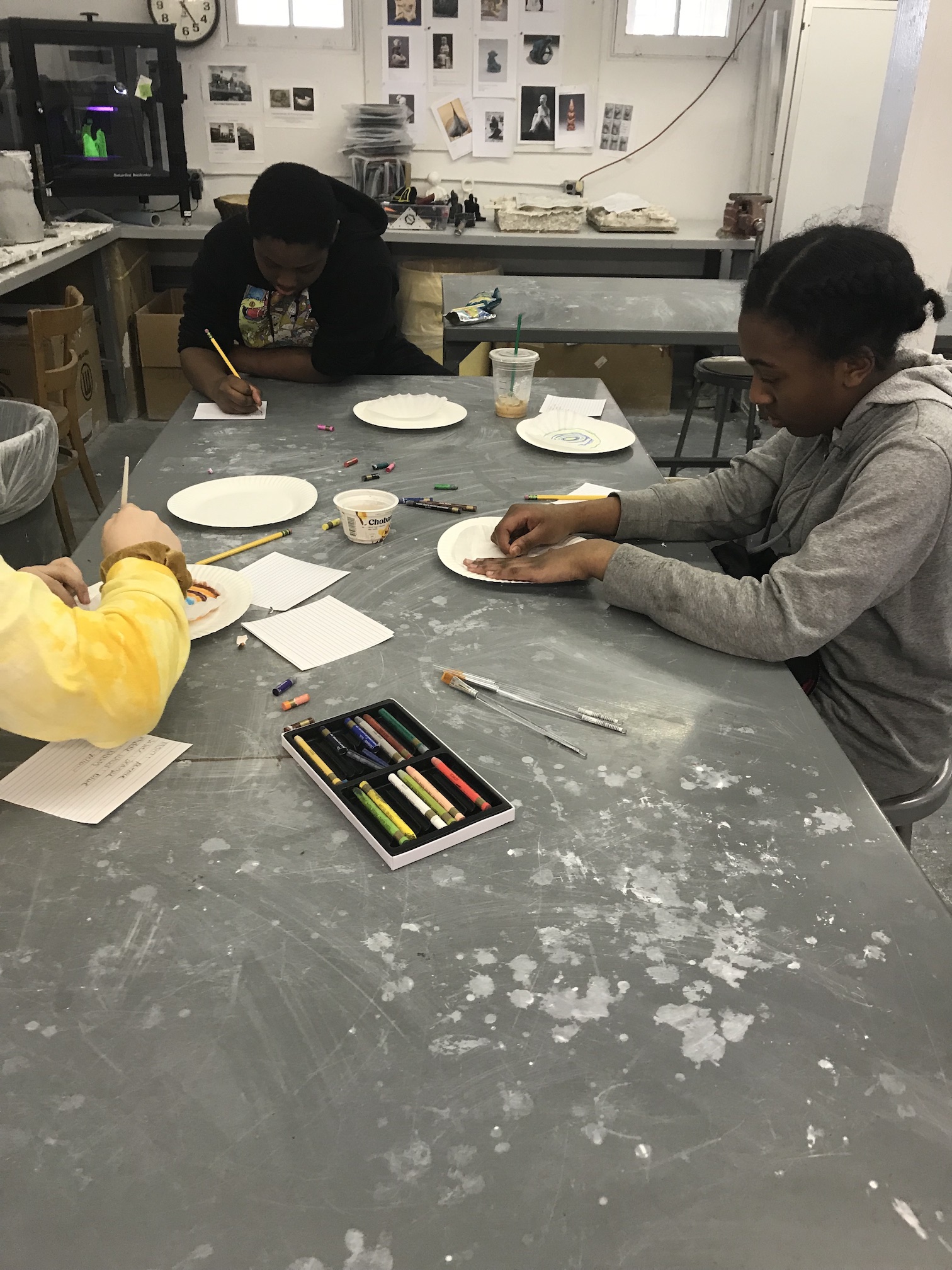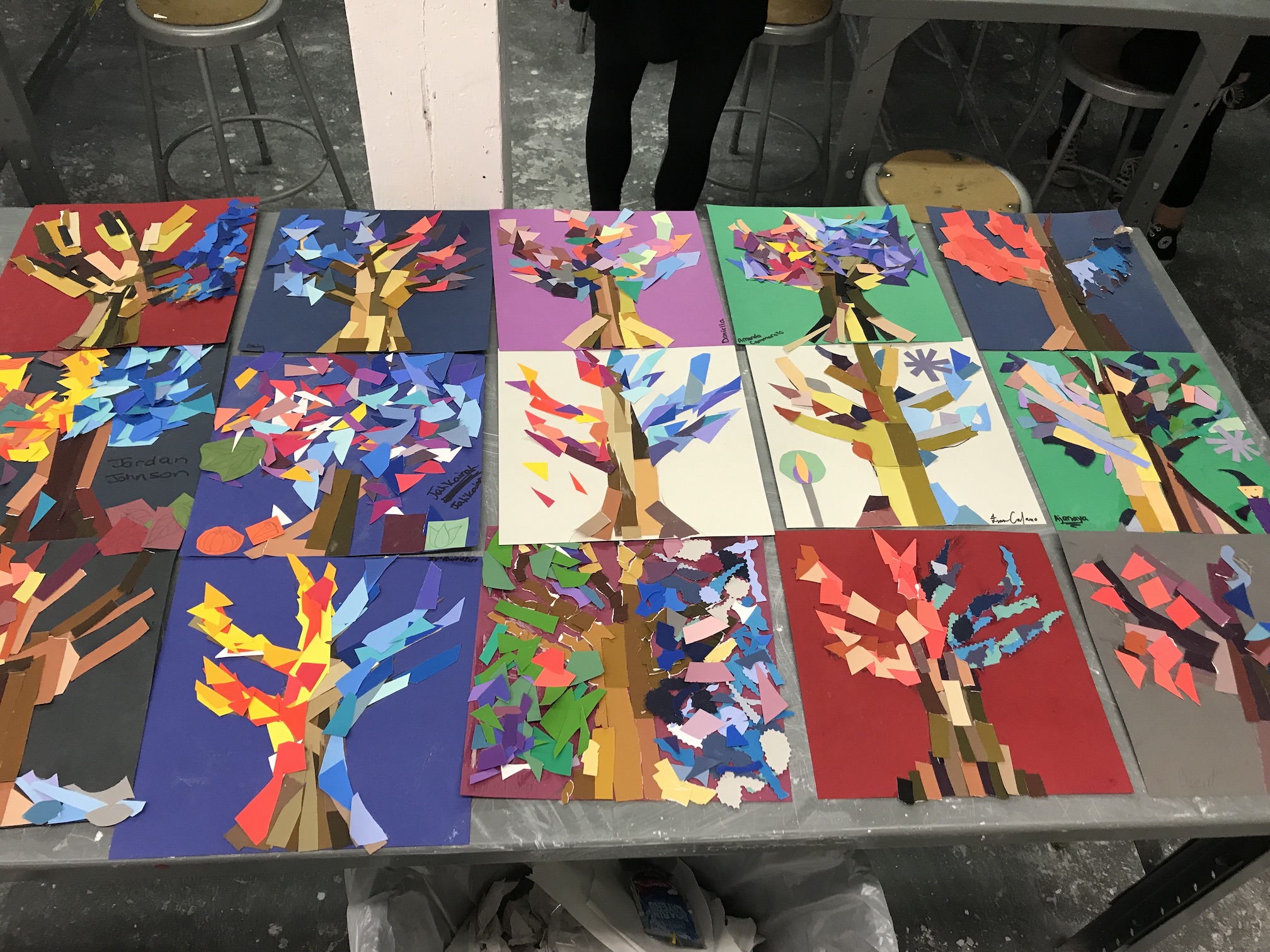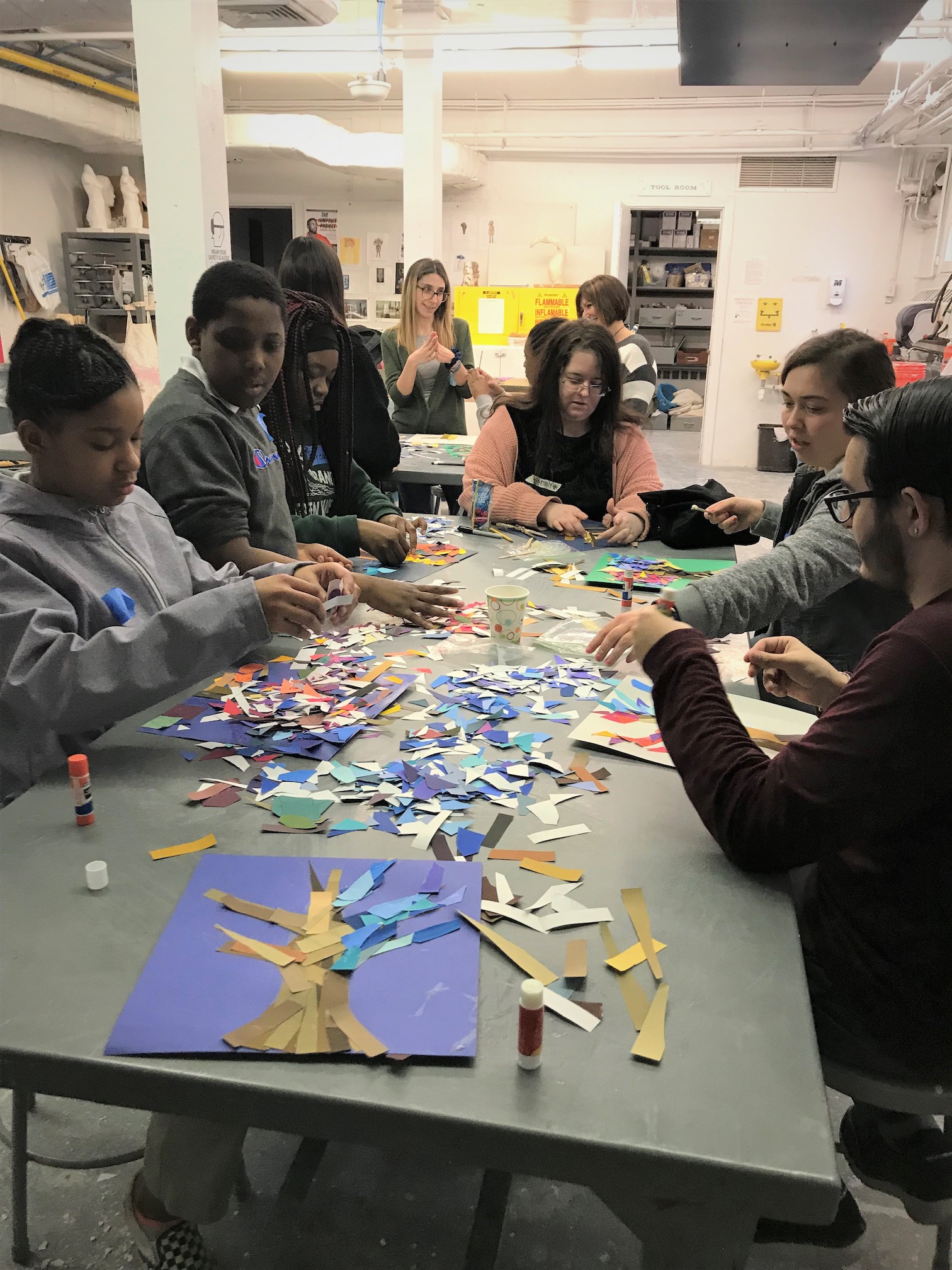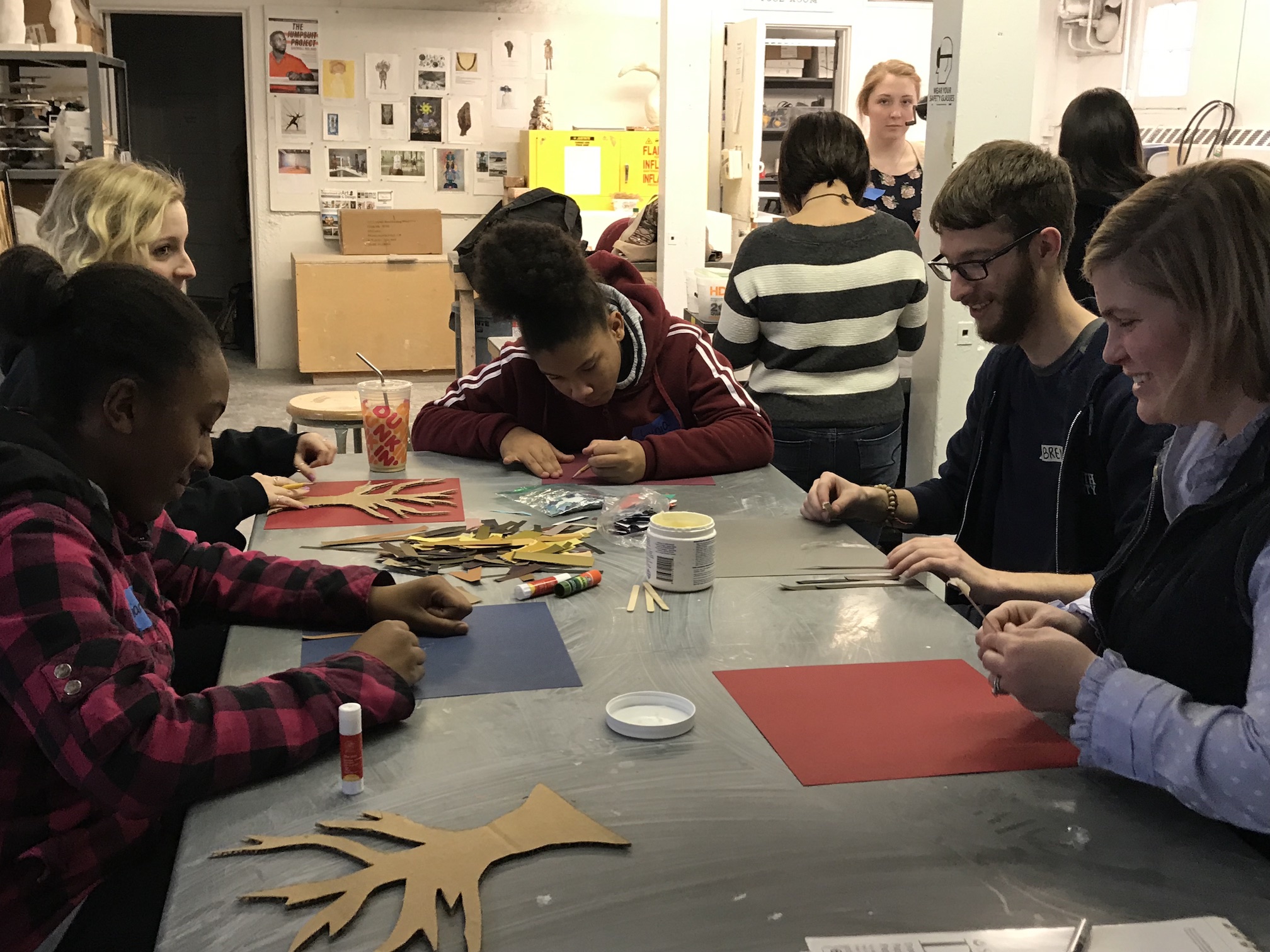The project we created as a class was to bring awareness to and help combat deforestation. More specifically, we wanted to bring attention to the deforestation occurring on a more personal and local level; as in the deforestation occurring in our town due to new real estate developments. Our project involved the creation of masks, made of eco materials, that we then attached to the trees on campus. We made the masks to bring attention to the trees that are around us.
Often times, especially in more urban settings, people do not ten to acknowledge the trees around them and therefore do not notice when those trees are cut down or removed for whatever reason. The masks we made were all different from one another and served different purposes. One purpose they had in common, however, was to enchant our audience. It is not often that you see faces on the trees on your way to class, so we wanted to provide a sense of wonder, curiosity, and enchantment to the students, faculty, and visitors on campus.
Written by Mindy Penelli
Students in the Eco Art course collaborated on a deforestation project, anthropomorphizing trees in an effort to bring awareness to the climate issue of deforestation. Creating masks from eco materials in conjunction with the “Leave No Trace” assignment, the masks were a way to bring attention to the trees. Students researched the species and symbolic meaning behind each tree as a way to further their message and help bring more awareness to their cause. During Monmouth University’s Scholarship Week, the class set up a table outside daily by the tree display to help fund the planting of new trees through the Arbor Day Foundation.
More research and photos can be found at the following link: https://ecoartdeforestation.wordpress.com/
To donate: https://fundraise.arborday.org/team/420918








